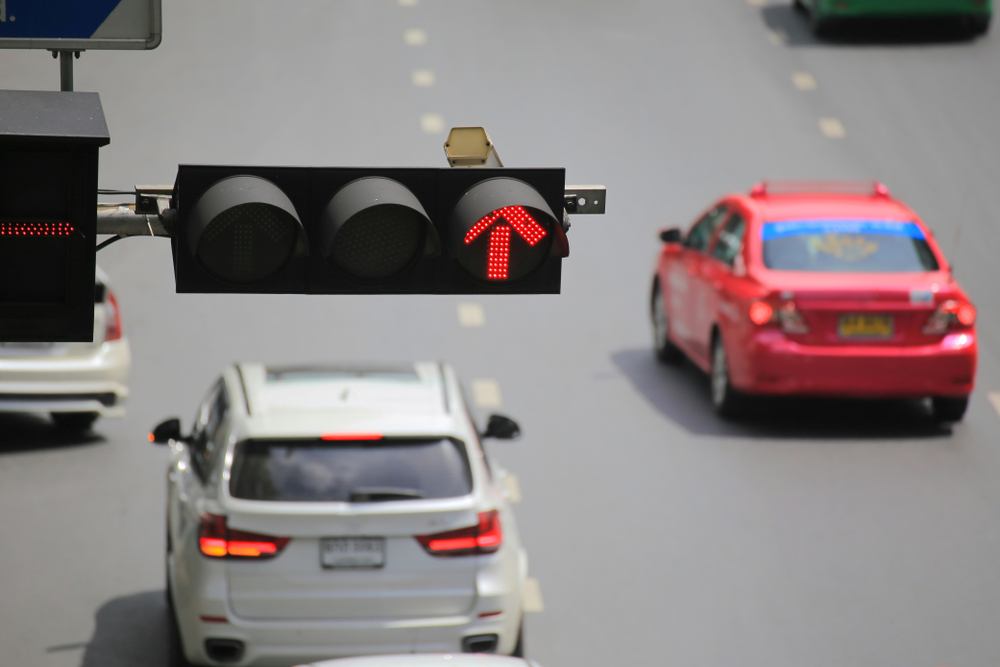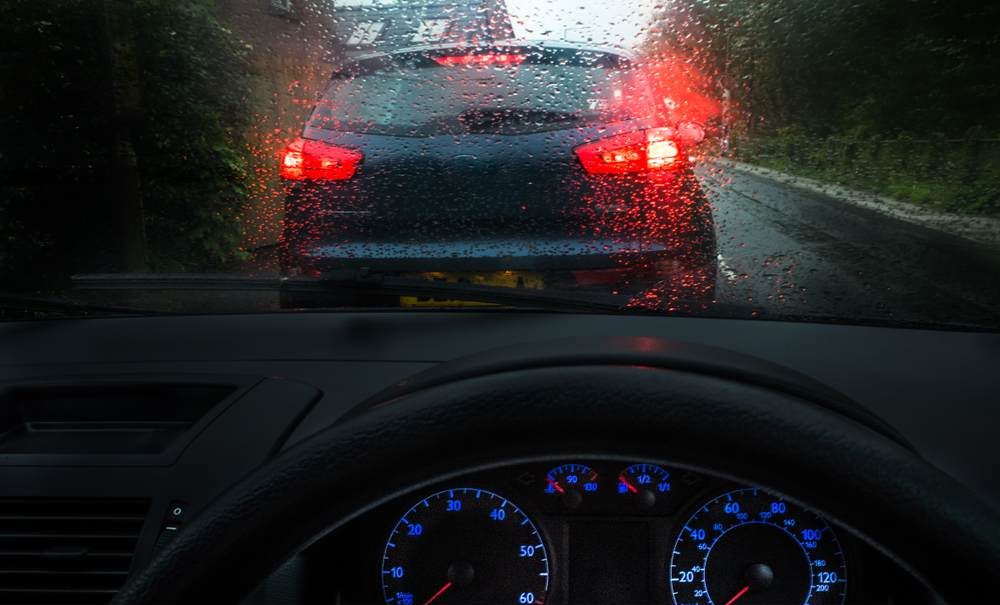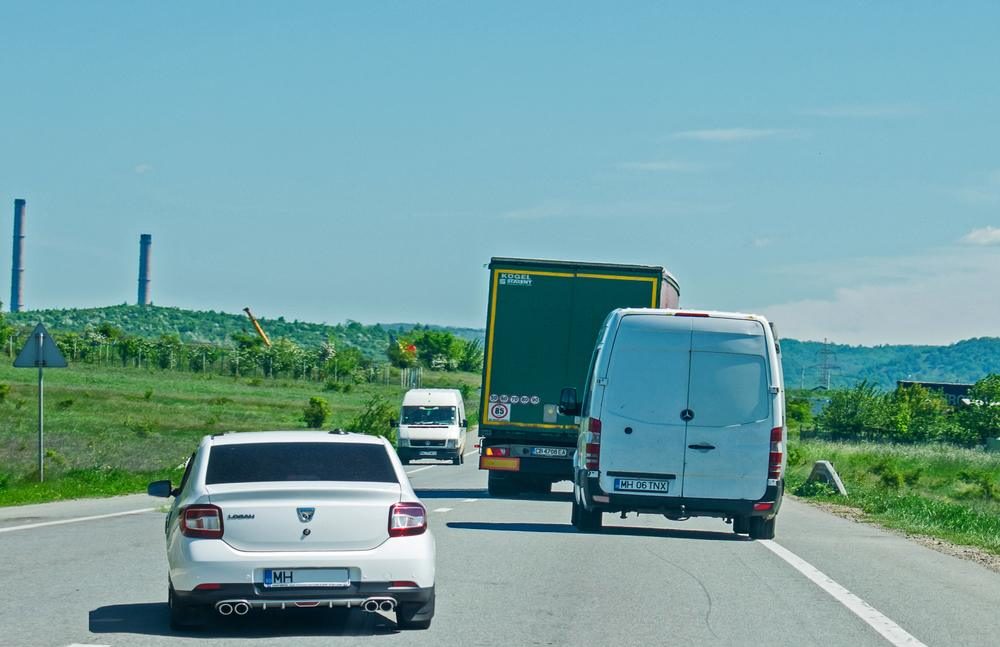 Picture this: You are driving home from work and eager to get some dinner. You feel your stomach rumbling and look forward to changing into comfortable clothes and spending time with your family. But before you can get there, you have to work your way through thirty minutes of rush-hour traffic. Everyone else on the road is impatient to get home, too. While you are probably frustrated at the traffic around you, you understand that this happens, and perhaps you sigh and turn up your favorite radio station.
Picture this: You are driving home from work and eager to get some dinner. You feel your stomach rumbling and look forward to changing into comfortable clothes and spending time with your family. But before you can get there, you have to work your way through thirty minutes of rush-hour traffic. Everyone else on the road is impatient to get home, too. While you are probably frustrated at the traffic around you, you understand that this happens, and perhaps you sigh and turn up your favorite radio station.
But then the driver behind you starts expressing their frustration with aggressive driving. The driver comes up close to your car and honks at you, but there’s nothing you can do because it’s regular traffic time. You might be tempted to honk right back and let out some of your own frustration. But it’s important to keep yourself from engaging with an aggressive driver who may end up becoming a danger to the safety of people around them. Keep in mind these safe driving tips, and know how to be prepared to deal with aggressive drivers.
Five Examples of Aggressive Drivers
 Aggressive driving refers to a situation where a driver ends up committing various traffic offenses that end up endangering people or property around them. What might start as simple frustration can escalate into breaking the rules of the road in such a way that risks the safety of those around them and may eventually lead to an accidents and cause car accident injuries. Here are five examples of aggressive drivers:
Aggressive driving refers to a situation where a driver ends up committing various traffic offenses that end up endangering people or property around them. What might start as simple frustration can escalate into breaking the rules of the road in such a way that risks the safety of those around them and may eventually lead to an accidents and cause car accident injuries. Here are five examples of aggressive drivers:
Tailgating
Tailgating is a type of aggressive driving where a driver follows too closely behind another car. An aggressive driver may express their frustration by driving really close to your car and leaving only a few feet of space between your vehicles. This can be incredibly dangerous because the aggressive driver will have significantly less time to respond if the driver in front needs to hit the brakes.
Speeding
Every road has a speed limit for a reason: to enhance the safety of all cars on the road and the pedestrians and property alongside those roads. A speed limit creates less disparity between how fast or slow drivers are going in an effort to reduce potential accidents. When you start driving above the speed limit, it can actually increase the amount of time and distance you need to prevent a crash. Car wrecks that occur due to speeding can also end up causing more severe injuries.
Illegal Passing
Illegal passing refers to a type of reckless or aggressive driving where you pass others along an intersection, on a hill or slope, along a curve in the road, or passing emergency vehicles or school buses. Aggressive drivers may lose their patience and decide to quickly jerk their car around another one in their way and actually increase the odds of getting into an accident.
Ignoring Signals
From turn signals in your car to red lights at an intersection, ignoring these can put lots of people at risk. Driving laws require drivers to use turn signals to indicate lane changes and other various traffic maneuvers for the safety of everyone involved. Rushing through a yellow light right as it turns red is also a type of ignoring signals and can create a dangerous situation for others on the road.
Failure to Yield
After you slow down or come to a stop, drivers must yield the right of way to others on the road. This can look like a driver who does not wait for others to cross at a four-way stop or a driver who fails to wait for the opposite traffic turning left before they turn right into the same lane. A failure to yield is risky behavior that can result in an accident that could have been avoided.
Aggressive Drivers and Road Rage
Sometimes an aggressive driver can escalate into a road rage situation. Road rage is defined as a situation where a physical assault occurs during a traffic incident. The term assault can refer to damage to a person or a vehicle in the case of road rage. Aggressive drivers who exhibit road rage may use their vehicle as a weapon with the intention of harming drivers around them. Sometimes an aggressive driver may also brandish or use a firearm in a road rage incident. If you encounter an aggressive driver engaging in road rage, it is best to get out of the way as safely as possible to avoid getting into an altercation. An angry driver on the road may hope to trigger aggressive behavior from you in return to help justify their own actions. Taking out one’s frustrations on other cars or drivers is never appropriate and can put everyone on the road at great risk.
How to Stay Safe Around Aggressive Drivers
 When another driver acts aggressively toward you, you may be tempted to respond with your own frustration or aggression. However, the best thing you can do for yourself and those around you is to practice these steps to stay safe around aggressive driving:
When another driver acts aggressively toward you, you may be tempted to respond with your own frustration or aggression. However, the best thing you can do for yourself and those around you is to practice these steps to stay safe around aggressive driving:
Let Them Pass You
If another driver is tailgating you, passing you, or taunting you by honking their horn or gesturing out the window, it is best to let them pass by you and get on their way. Especially if you are on a busy road or a multi-lane highway, it is best to change lanes if possible and let them continue on. If an aggressive driver confronts you on a small, single-lane road, then you may choose to pull over and allow them to pass you to avoid further incidents.
Stay Focused
An aggressive driver is looking to get your attention, and that can distract you from the task at hand. The best thing you can do for your safety and the safety of those around you is to stay focused on the road. If you can’t get out of their way because of traffic or something else, the best you can do may be to take a deep breath and focus on your driving. Try to stay relaxed when dealing with an aggressive driver, as this will help you be able to think clearly if the aggressive driver tries to escalate the situation.
Avoid Eye Contact
Aggressive drivers may try to make eye contact with you by getting too close to your car and expressing their frustration. It is best to avoid eye contact with an aggressive driver as best as you can. The driver may not be safely focused on the road in front of them while trying to get your attention, so you want to be alert to any sudden changes or potential for a traffic incident. Try to stay looking straight ahead and ignore the driver as they pass you and move along.
Do Not Engage
When a driver honks your horn at you, and you know you are not in the wrong, you might be tempted to honk right back. Or perhaps shout at them or exchange a hand gesture. However, the best thing you can do when dealing with an aggressive driver is to not engage with them at all. If you engage, the aggressive driver may escalate their behavior and continue to act erratically.
Contact the Police
In extreme circumstances, like an aggressive driver who is engaging in road rage that is actively causing risky situations for drivers around you, you may want to contact the local police. This can help protect you and other drivers on the road and hopefully get this driver taken off the road for their aggressive driving.
Car Accidents Caused by Aggressive Driving
Unfortunately, car accidents happen every day, and millions of people end up dealing with car accident injuries in the US each year. Here are some examples of the types of car accidents that can be caused by aggressive driving.
Rear-End Collision
A rear-end collision is one of the most common accidents that can occur due to aggressive driving. An aggressive driver who is tailgating you can end up without enough reaction time if you need to hit your brakes. Rear-end collisions are also commonly caused by distracted driving. One of the most common car accident injuries that can result from a rear-end collision is whiplash. The force of impact to the back of your vehicle can cause your head and neck to snap back and forth violently, straining your neck muscles and aggravating your spine and nerves.
Sideswipe Collision
A sideswipe collision refers to an accident where drivers are next to each other on the road and the sides of the vehicles come into contact with one another. Because the cars are parallel to one another, the initial accident can also put the drivers at risk of losing control of the vehicle, which can result in a secondary impact. An aggressive driver may drive too closely to you out of road rage and end up causing an accident. A sideswipe accident can put both drivers and passengers at greater risk for injury because of how close their bodies may be to the collision site. Whiplash can also occur in a sideswipe collision, along with other types of head trauma.
T-Bone Accident
A T-bone accident refers to a car wreck where the front of one car collides with the side of another car, forming the shape of the letter “T.” A T-bone accident, also known as a broadside collision, may occur because a driver failed to yield the right of way to another driver or to stop at a traffic light or stop sign. An aggressive driver may try to speed through a red light or change lanes in the middle of an intersection, putting other drivers at risk. T-bone accidents can result in serious injuries like deep lacerations, broken bones, concussions, and spinal injuries. Keep your eye out for other drivers before you move into an intersection to help avoid the risk of this type of accident.
Head-On Accident
A head-on accident is perhaps the most dangerous of all types of car accidents. If another vehicle collides with the front of your car, this can result in serious and sometimes fatal injuries. Seat belts and airbags are designed in part to help prevent you from getting ejected from the vehicle during a head-on collision. However, these safety features cannot completely prevent you from suffering injuries in this type of dangerous collision. Head-on accidents are most often caused by aggressive driving like speeding or drunk driving. This type of accident is considered the deadliest type of car crash and can result in severe head trauma and death.
Multi-Car Crash
A multi-car crash refers to a car accident that involves three or more vehicles. This may involve a chain reaction of rear-end collisions, where the first driver rear-ends the driver in front of them, and that car gets shoved forward into the driver ahead of them. A multi-vehicle accident can significantly damage your vehicle along with all drivers and passengers involved. In a chain-reaction multi-car crash, the driver and any passengers in the middle are also at greater risk for serious injury. It can also be difficult to determine who is at fault for the accident, and more than one driver may be determined at fault. Aggressive drivers who make erratic and unsafe lane changes are more likely to cause a car wreck that affects multiple drivers.
How a Car Accident Doctor Can Help
If you’ve been injured in a car accident, make a plan to see a car accident doctor as soon as possible. Car accident doctors specialize in diagnosing and treating a wide range of car accident injuries. At AICA Orthopedics in Jonesboro, our team of car accident doctors understands the importance of detailed medical records that can help support an insurance claim or lawsuit against an aggressive driver. We use extensive diagnostic procedures and provide personalized treatment plans to ensure you get the treatment and care you need for your injuries. Our Jonesboro car accident doctors include orthopedic doctors, neurologists, chiropractors, and physical therapists, all in one convenient place. Visit our Jonesboro car accident clinic near you to get started with our team and get the treatment you deserve.
